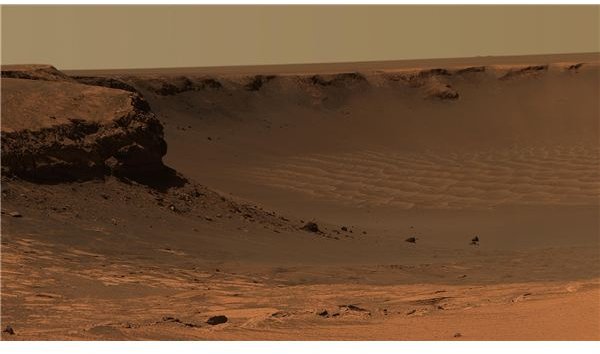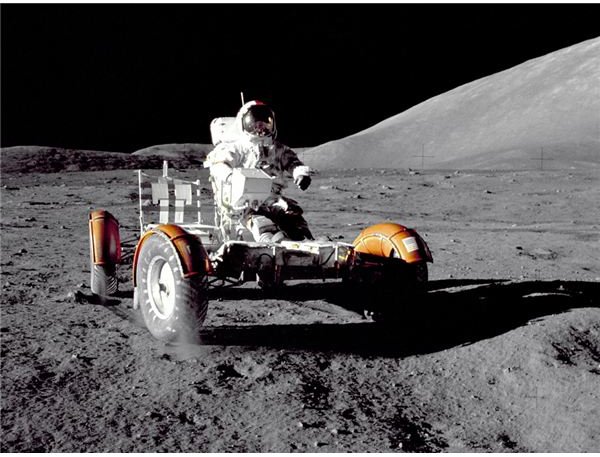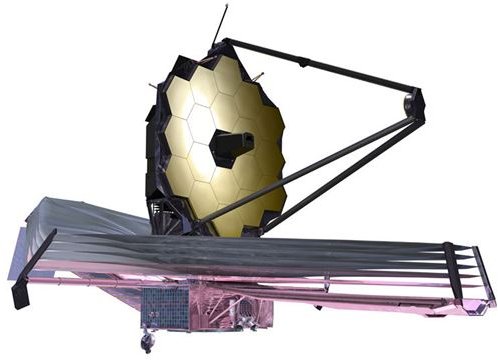What is a Manned Spacecraft Better At Than an Unmanned One?
To the End of Eternity
Space is a vast, open, and seemingly endless void that is still, despite the best efforts of humanity, an unknown. Our studies of the universe outside our atmosphere are carried out with two methods, manned and unmanned spaceflight. The former being the most popular aspect of space exploration, with the Apollo and shuttle programs being big names in manned spaceflight. However, unmanned spaceflight is just as significant and important, if not more so, than manned spaceflight. Space telescopes like the Hubble and, hopefully, the James Webb provide scientists with quantities of data that would boggle the minds of even the most tech savvy user. There are also the planetary rovers like Spirit and Opportunity and the soon to launch Mars Science Laboratory, known as Curiosity. But we couldn’t forget the pioneers of space exploration, the probes themselves. Names like Voyager and Pioneer, which have been transcending the boundaries of the solar system for decades now, are just as important to our space exploration as any other form of space flight. Even today, with the Cassini and New Horizons probes furthering our understanding of objects in our solar system, we’re reminded how vital these unmanned missions really are to the space program.
The important distinction to make between manned and unmanned spacecraft are the lengths of their missions, the objectives they are capable of accomplishing, and the effectiveness of each mission. Both manned and unmanned spacecraft have advantages and disadvantages in each of these categories, which is what makes them both incredibly useful and why it’s crucial to the success of a space program to properly spread out the number of each type of mission.
Purpose and Performance
With every mission there is a specific result that the operators and designers are trying to accomplish. For a manned mission like the space shuttle, it may be to deliver a new module to the International Space Station, while for a rover it may be to look for samples of water ice on Mars. However, no one is sending a multimillion dollar craft into space to act as a delivery service or to dig around in the dirt and call it quits. Most missions have numerous secondary objectives, ones which aren’t crucial to the outcome, but will be a bonus if accomplished. In recent years, with the shuttle in particular, these types of secondary objectives aren’t as frequent. Everything a shuttle mission is intended to accomplish is accomplished, simply because there are so many things that need to be done rather than being bonus opportunities. Back when Apollo was still news, the missions to the Moon were filled with extra activities for the astronauts to attempt to accomplish, everything from gathering more rock samples to taking different pictures or measurements, even as far as just exploring more of the lunar terrain. Today, the missions still full of secondary objectives are the unmanned missions, largely because they are so unpredictable. It’s impossible to know how a robotic rover or probe mission will play out. Obviously the engineers and planners attempt to nail down every aspect prior to launch, but because of the nature of the work, there will always be surprises and bumps in the road.

A particularly interesting case for this concept is that of the Mars rovers. Opportunity and Spirit, two of the longest lasting rover missions in NASA history, were designed to run for 90 Martian days. Much to the surprise of NASA engineers, the rovers were still going hundreds of days after their initial mission length. Currently, the Opportunity rover is still rolling along with over 2,700 Martian days under its belt. Spirit, on the other hand, hasn’t been as lucky, but this is where the importance of secondary objectives comes into play. When Spirit became stuck, it was converted into a stationary research platform and remained such until its final communication with Earth.
When the going gets tough, unmanned missions get tough and keep on going. The ability to take what would be considered a failure to most and make it into a positive is what differentiates unmanned missions from manned ones.
Decades and Counting
While it may seem like Opportunity’s 2,700 days of activity is astounding, and it certainly is, a number of unmanned missions are still providing us with science decades after their launch. A manned mission is only able to go for as long as a human is capable, with the longest being the time spent on the space station. An unmanned mission, on the other hand, is only restricted by its ability to maintain power.
A testament to this fact is the Voyager 1 probe which was launched in 1977 on a mission to explore the solar system. Throughout its lifetime, it has passed and provided data on such objects as Saturn and Jupiter as well as the very edge of our solar system itself. The amount of information which Voyager 1 alone has provided scientists is staggering when compared to the technology available at the time of its launch. Estimates place the total usable mission time of Voyager 1 at nearly half a century, with its radio signal capable of being maintained until 2025.
The Human Element
Despite the abilities of robotic missions to last far longer than manned missions, it’s impossible to discredit the abilities of a human being to adapt and change according to the needs of a mission. Whether it’s an interesting crater on the other side of a hill on the Moon or the disastrous outcome of a technological or engineering failure, having a human as the tool of the mission can and will prove vital when the opportunity presents itself.

While rovers can go for years without water or food, they can’t do close to the amount of work a human can in the same time. It may take months to travel a mile for a rover, but if you get an astronaut and a vehicle on Mars, they can cover an extrememly larger area than any robotic mission.
Obviously, a human has to come back, but this final mission objective is also the best thing about sending a human to do a robot’s job. Until very recently, all the robotic missions sent into space have been destined to remain there. Yet, in 1969, when Apollo 11 landed on the Moon, the astronauts brought back handfuls of lunar rocks for scientists to examine and study. Having the ability to not only explore but also retrieve from the mission location makes sending a human on a twelve hour mission just as useful as sending a probe on one that lasts a decade.
As a matter of fact, the early days of spaceflight were dependent entirely upon the abilities of human pilots. While not nearly as famous as the Apollo program which they allowed to happen, the Mercury and Gemini projects were at the forefront of spaceflight, with missions ranging from operational tests to continued record breaking attempts at orbital distance. These projects established the backbone of manned spaceflight which made it possible for Americans to become the first humans to land on the Moon. None of which would have been possible without the use of manned spaceflight.
Finally, the most important aspect of the human element is the capability to solve problems. When Apollo 13 was faced with certain doom, the abilities of the astronauts and engineers to safely and effectively guide the mission back home without any casualties was no doubt one of the best adaptations to any crisis in space flight history. It certainly earned its descriptor: “the most successful failure in NASA history”.
Manned vs Unmanned
Today, the agendas of most space agencies are set on big milestones for manned spaceflight and new discoveries for unmanned spaceflight. With NASA’s shuttle program officially over, the role of maintaining manned spaceflight, and potentially making the first landing on another planet, falls on the shoulders of private industry. Organizations like SpaceX and Rocketplane Kistler are at the forefront of this privatization, but many are dubious about allowing the profit margin to be of more significance than the science.
As for the legacy of unmanned spaceflight, it’s only just getting started. With the vast improvements to technology and the new ways to power and contact these unmanned vehicles, the sky is the limit for robotic missions to space.
Describing the comparisons and contrasts between manned and unmanned spaceflight is unfair to the reality of space exploration. Both are necessary parts of our ability to further expand our knowledge and understanding of the universe and its workings. There is not one or the other which cannot be continued. Each presents its vital aspects and importance, making the mesh between the two a perfect fit for scientific research and exploration.
References
Voyager Probes, NASA: https://voyager.jpl.nasa.gov/
Mars Rovers, NASA: https://marsrover.nasa.gov/home/
Apollo Missions, NASA: https://www.nasa.gov/mission_pages/apollo/
Images
Apollo 17, (Public Domain, Credit: NASA https://www.nasa.gov/multimedia/imagegallery/image_feature_774.html)
Victoria Crater, (Public Domain, Credit: NASA https://marswatch.astro.cornell.edu/pancam_instrument/991B_cape_verde.html)
JWST, (Public Domain, Credit: NASA https://www.jwst.nasa.gov/images_artist13526_white.html)
